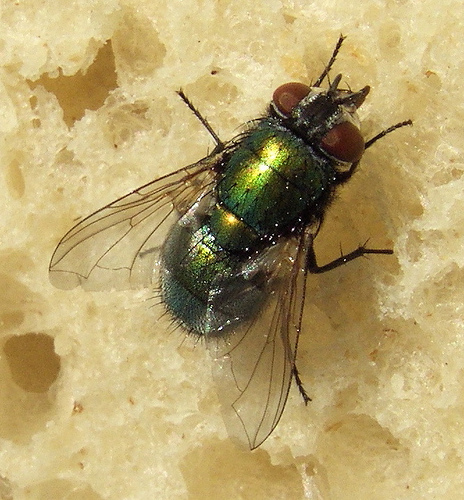The holidays bring bad food safety advice, and in what’s turning into an annual tradition, it’s time to bash the Brits.
.jpg) “The Food Standards Agency is hoping to reduce the number of food safety clangers that are served up this Christmas, with its Christmas food safety advertising campaign.”
“The Food Standards Agency is hoping to reduce the number of food safety clangers that are served up this Christmas, with its Christmas food safety advertising campaign.”
WTF is a clanger?
Oh, Dick van Dyke, is there nothing you can make sound Cockney?
“The Agency’s TV and radio adverts are jovial but have serious underlying messages about the preparation and cooking of turkey:
don’t wash it (you don’t need to)
defrost it thoroughly
cook it properly
That’s terrible grammar; a bulleted list should contain bullets, with semi-colons and an end period. I thought the Brits were serious about this stuff.
“The Agency’s research has shown that many people wash their turkeys before cooking, with older women the most frequent turkey-washing offenders. But washing meat or poultry can cause harmful food poisoning bacteria to splash on to worktops, chopping boards, dishes and utensils, where they can linger for days.
.jpg) “Partially defrosted turkeys are another common festive food safety blunder.”
“Partially defrosted turkeys are another common festive food safety blunder.”
This is good stuff: don’t wash the bird, and defrost the thing – notice they don’t say whether it’s OK to do it on the counter or not.
But then, once, again, with all the food safety communication thingies in the government employ, the best they can come up with is,
“To ensure that the turkey is cooked properly, make sure it is piping hot all the way through. Cut into the thickest part (between the breast and thigh) to check that none of the meat is pink, and the juices run clear.”
No. Use a tip-sensitive digital thermometer. Color is a lousy indicator.
UK chief science thingy, Andrew Wadge, I’ll be in the U.K. Jan. 2 – 10, and I’d be glad to meet with you and your crack food safety risk communication team to talk about turkey prep recommendations.

 I am constantly annoyed with pet owners that take their little dogs to the store, especially the grocery store.
I am constantly annoyed with pet owners that take their little dogs to the store, especially the grocery store.  is for service, yet they cannot require a customer to show certification or other proof that an animal is certified. In fact, legitimate service animals aren’t always certified. (For more information on the law, call 1-800-514-0301.) A quick search on Google brought up
is for service, yet they cannot require a customer to show certification or other proof that an animal is certified. In fact, legitimate service animals aren’t always certified. (For more information on the law, call 1-800-514-0301.) A quick search on Google brought up .jpg) Separating the true service dogs from the personal pets makes it hard for those that rely on their service animals for help with a disability.
Separating the true service dogs from the personal pets makes it hard for those that rely on their service animals for help with a disability. 
(2).jpg)

 Keehn’s blog post concluded by saying,
Keehn’s blog post concluded by saying,.jpg) Today, the
Today, the And the Brits seem to have this obsession with how
And the Brits seem to have this obsession with how  The report by principal food safety officer Alan Yates also reveals that officials sent 1,168 warning letters to establishments alerting them to contraventions of public health legislation.
The report by principal food safety officer Alan Yates also reveals that officials sent 1,168 warning letters to establishments alerting them to contraventions of public health legislation..jpeg) The story cites the U.K.
The story cites the U.K. .jpg)
 No.
No. .jpg) I expressed a similar notion this morning in the
I expressed a similar notion this morning in the